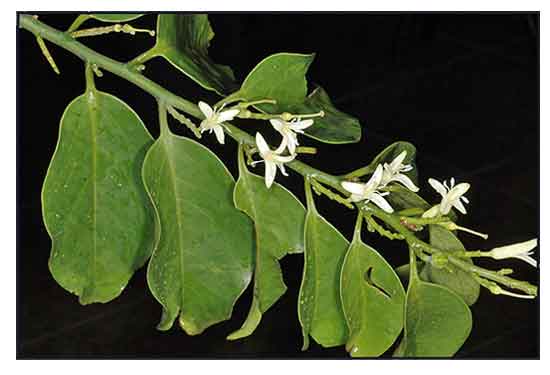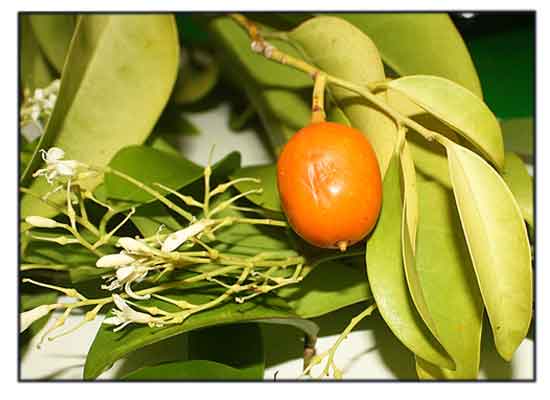
Family • Olacaceae
Biton
Olax imbricata Roxb.
OLAX
Tie qing shu
| Scientific names | Common names |
| Fissilia psittacorum Blanco | Aranghita balagon (Bis.) |
| Loranthus mitchellii Wall. | Balagon (P. Bis.) |
| Olax imbricata Roxb. | Biton (Tag.) |
| Olax laxiflora Ridl. | Malabaguio (Tag.) |
| Olax loranthiformis Griff. | Ubet-ubet (Ilk.) |
| Olax lucida B.Heyne ex Wall. | Olax (Engl.) |
| Olax merguensis Planch. ex Mast. | South Asian olax (Engl.) |
| Olax multiflora Ridl. | |
| Olax multiflora Rich. ex Baill. | |
| Olax phoenicarpa Roxb. ex Voigt | |
| Olax rosea Ridl. | |
| Olax seminifera Valeton | |
| Olax sphaeocarpa Griff. | |
| Olax wightiana Wall. ex Wight & Arn. | |
| Olax wightiana var. bracteata Hook.f. | |
| Olax wightiana var. nigrescens Gamble | |
| Pseudaleia longistylis Hassk. ex Valeton | |
| Olax imbricata Roxb. is an accepted species. KEW: Plants of the World Online | |
| Other vernacular names |
| CHINESE: Tie qing shu. |
| INDONESIAN: Kaya kil, Leteng. |
| KANNADA: Gopurakaayi, Saraliballi. |
| MALAYALAM: Mannankoran-kodi. |
| MARATHI: Kukkurbit. |
| TAMIL: Vandathuluku. |
| THAI: Lumnok. |
| VIETNAMESE: Du'ong dau ket ho'p. |
Botany • Shrubs, sometimes climbers, 2-6 m tall. Branchlets brown. Petiole 5-10 mm; leaf blade elliptic to ovate-oblong, 5-10 × 2.5-3.5 cm, ± leathery, glabrous, base rounded, apex acute; secondary veins 6-9 on each side of midvein. Inflorescences usually unbranched, 1.5-2.5 cm; rachis zigzagged; peduncle 3-10 mm. Pedicel 1-3 mm. Calyx small, truncate. Petals white or yellowish, 8-10 mm, 1 entire and 2 2-lobed. Style to 1 cm. Drupe ± globose or obovoid, nearly covered by accrescent orange calyx, 1.5-2 cm in diam. (Flora of China)
Constituents Properties Studies Availability |
August 2023
![]()
 |
| PHOTOS / ILLUSTRATIONS |
| IMAGE SOURCE: Photo - Olacaceae : Olax imbricata / Flowering shoot / Copyright © 2014 by Jer-Ming Hu (contact: dn277@cornell.edu) [ref. DOL86773] / Non-Commercial Use / click on image or link to go to source page / Phytoimages.siu.edu |
| IMAGE SOURCE: Photo - Olacaceae : Olax imbricata / Flowers and fruit / Copyright © 2012 by Craig Costion (contact: dn277@cornell.edu) [ref. DOL46419] / Non-Commercial Use / click on image or link to go to source page / Phytoimages.siu.edu |
Additional
Sources and Suggested Readings |
• |
DOI: It is not uncommon for links on studies/sources to change. Copying and pasting the information on the search window or using the DOI (if available) will often redirect to the new link page. (Citing and Using a (DOI) Digital Object Identifier) |
| List of Understudied Philippine Medicinal Plants |
• |
 |

 Gen info
Gen info
